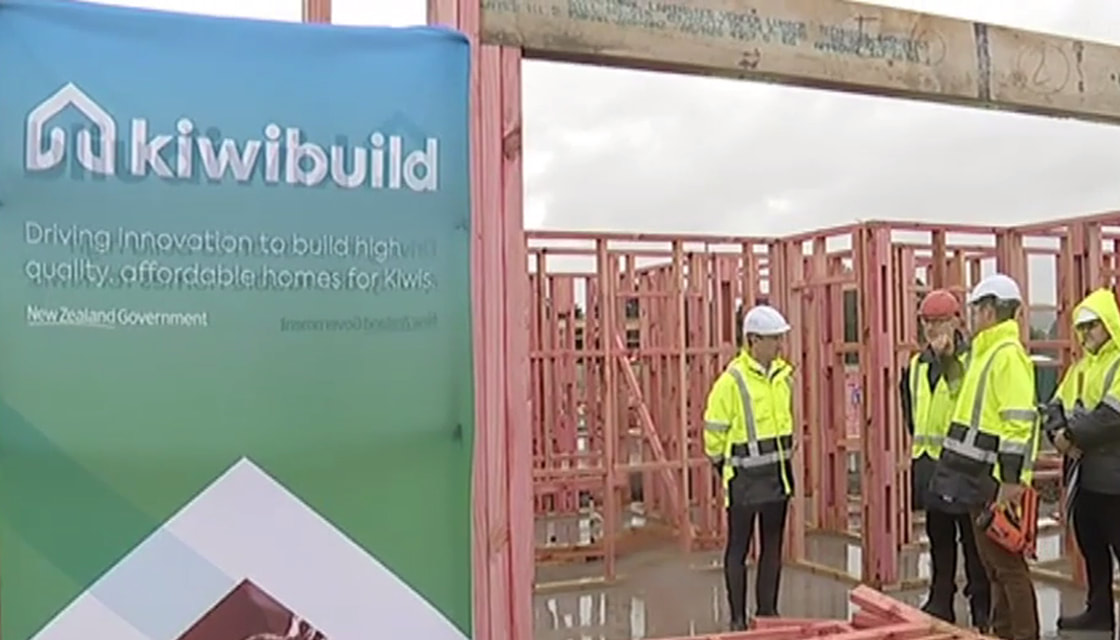|
Housing and Urban Development Minister Phil Twyford has revealed the criteria for buyers to qualify for KiwiBuild homes.
OPINION: Kiwibuild's income criteria are so broad that most households will qualify. The result is a policy aimed firmly at the middle and high-income earners or New Zealand. Kiwibuild need not be a failure, if it manages to build more homes without disrupting current supply, and improves construction sector capacity to build more and better homes. But Kiwibuild will not build houses for home ownership for low-Income households. Rather, it is aimed at middle and relatively high-income households: a single person with income of $120,000 and a couple's income of $180,000. A generous income cap was unavoidable. Houses built to sell need people with incomes to service a mortgage and who have already saved a deposit. Realistically, a low-income household doesn't meet those criteria. READ MORE: * KiwiBuild registration: Close to 6000 people want in * KiwiBuild: Couples earning up to $180k will be able to buy homes * Why the Government is letting the rich buy KiwiBuild homes If KiwiBuild wanted to improve housing conditions for low-income households it would have focussed instead on boosting state housing, community housing, build-to-rents (that is, build new homes for the exclusive purpose of renting them out) and assisted ownership (like the shared equity programme run by the likes New Zealand Housing Foundation). ADVERTISEMENT If it really wanted to make KiwiBuild houses affordable to buy for low-income households, the houses needed to be much cheaper. Because land is the largest part of a home's cost, KiwiBuild would need houses on well-organised leasehold land. A good long-term lease over say 70 or 100 years is doable for the government. Last year, Austria borrowed for 100 years at 2.1 per cent. Interest rates have moved up since then but they are still more affordable than paying for land upfront. If the land was leased at the servicing cost of a 70 or 100-year bond rather than the upfront cost of land, many more lower-income households would have qualified. The upfront cost of a $600,000 home would halve, and the cost of lease would be modest. It would require outside-the-box thinking and public service innovation. Not much sign of that around KiwiBuild yet. There are other ways KiwiBuild can help, by boosting supply, building types of houses that would otherwise not be built, and building capacity in the construction industry. KiwiBuild plans to build 100,000 houses in the next decade. We already build around 200,000 a decade. The trick will be to ensure KiwiBuild doesn't just cannibalise houses we would have built anyway. CHRIS MCKEEN/STUFF Shamubeel Eaqub: "If it really wanted to make KiwiBuild houses affordable to buy for low-income households, the houses needed to be much cheaper." It is possible for the government to boost supply. We did that in the 1950s, when the government built state houses, but only in modest numbers. The biggest increase came from long contracts government entered into with builders and a guarantee to buy new subdivision houses at an agreed discounted price. Builders confident of income from other sources and a guaranteed buyer at a minimum price built more spec houses and had plenty of motivation to innovate to keep costs under control. Costs are going to be a big issue for KiwiBuild, because our construction sector is not very efficient. Productivity in the sector has not improved much in the last 30 years. A big increase in construction would need to bring in perhaps 50,000 more builders at the peak. That will take time to train people here or bring in workers from overseas. Alternatively, we can look to more prefabrication and structural insulated panels. By building in factory methods, construction costs will come down and homes will be built much faster. Sweden effectively did this with its million-homes programme that started in 1960s. However the houses are built they should aim to fill gaps in the market. Currently we do not build enough medium-density and small homes. KiwiBuild should aggressively increase supply of these kinds of homes. We should also build homes to a better standard. In a research report I wrote for the Green Building Council, it was clear that the running costs of a high-quality home is lower than those built at the current building code. It would make it easier for households to repay their mortgage if we built more energy-efficient and well-ventilated homes. KiwiBuild will not help low-income households buy homes. But it can still help if it manages to build more small, dense and high-quality homes. It could still improve by selling a portion to institutional long-term landlords like in Europe, but that doesn't appear to be part of the mix. The long-term fixes for low-income households are still through more state houses, better rental policies and mass reform of land supply and infrastructure financing. Shamubeel Eaqub is an independent economist. KIWIBUILD TRACKER Labour promised 100,000 new homes in 10 years. Its first deadline is 1000 built by July 1, 2019.
1 Comment
|
BLOG
June 2024
Categories |
LocationLocated on Grahams Road, we are right in the centre of Christchurch, making it a lot easier on the whole for people to reach out to us for help at any time during the day. |
|








 RSS Feed
RSS Feed